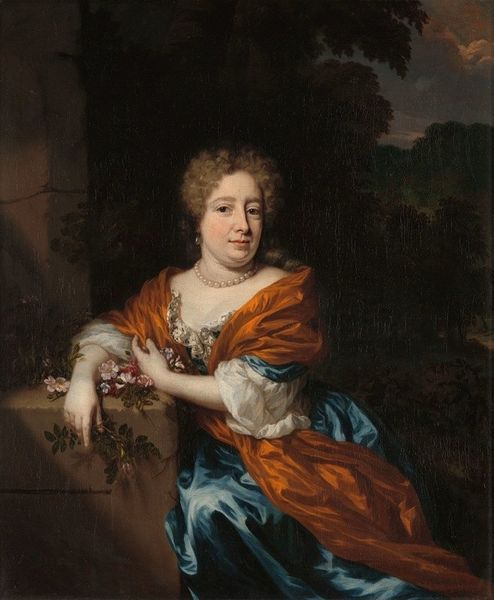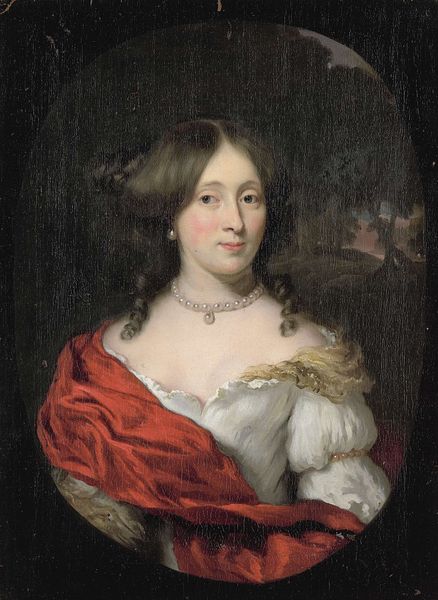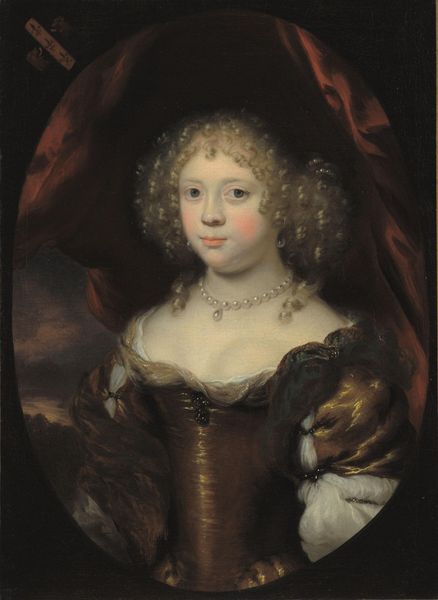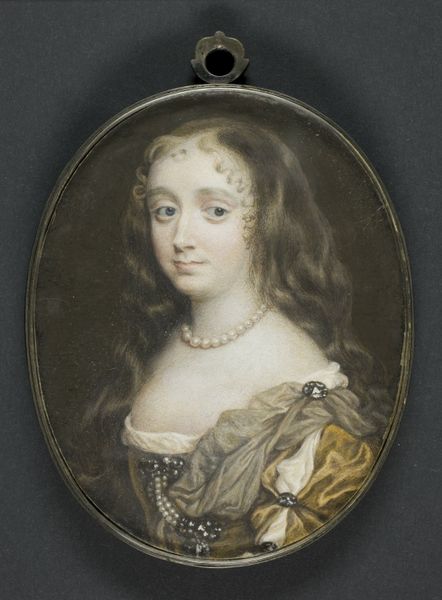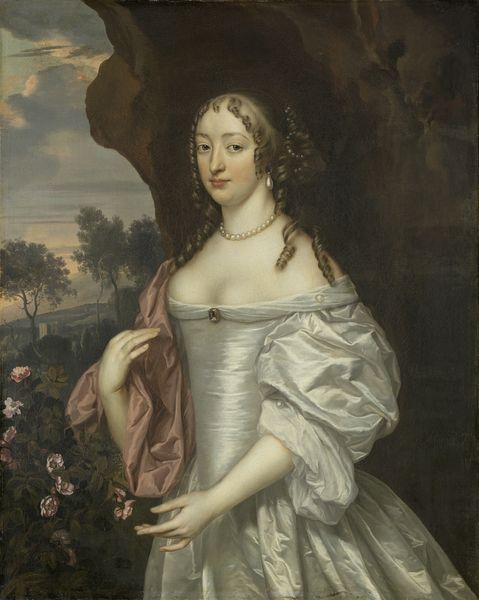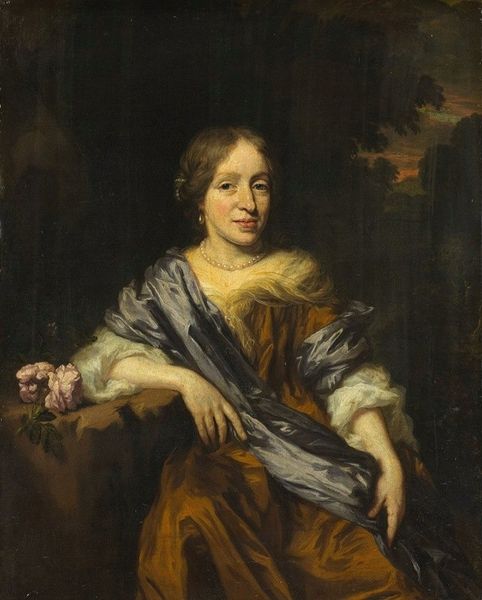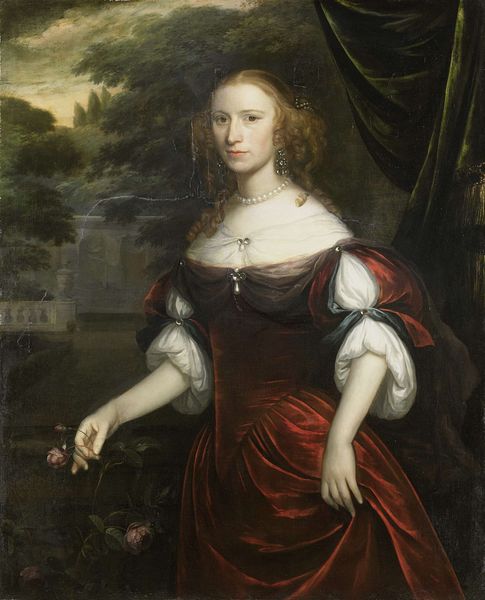
painting, oil-paint
#
portrait
#
figurative
#
baroque
#
painting
#
oil-paint
#
genre-painting
Copyright: Public Domain: Artvee
Editor: This is Nicolaes Maes' "Ingena Rotterdam," an oil painting from around 1704. The way she’s posed, draped in fabric and pearls, it feels like she’s presenting herself with such deliberate grace. What strikes you most about this piece? Curator: For me, it's the silent language of status so clearly on display. Notice how the pearls and rich fabrics act as visible markers of prosperity and respectability. Her reserved expression, set against the dark backdrop, suggests a carefully constructed public image, almost a performance of womanhood expected of her. Does the portrait reveal anything beyond the sitter's surface? Editor: Perhaps. I'm seeing some tension in her hand position. Is that a cultural signal? Curator: It might be! It subtly complicates the image of unflappable composure. The crossed hands, historically, can represent both modesty and anxiety. Considering the societal pressures on women of her station, could this gesture suggest the weight of those expectations? Editor: That’s a perspective I hadn’t considered! The pearls, which I saw as purely decorative, you see as powerful status symbols that can be a part of societal expectations. Curator: Indeed. What do you make of the background? The stormy skies perhaps mimic the drama hidden under the portrait. The artist added these not so subtle contrasts to build the story of the persona. Editor: It really does shift how you perceive the whole portrait. It makes the entire thing feel much more dynamic, more… alive. Curator: Precisely. The artwork transforms into a mirror reflecting not just her appearance, but a world of social and emotional complexities she lived in. This really makes me think of where women stand within social imagery even today.
Comments
No comments
Be the first to comment and join the conversation on the ultimate creative platform.
